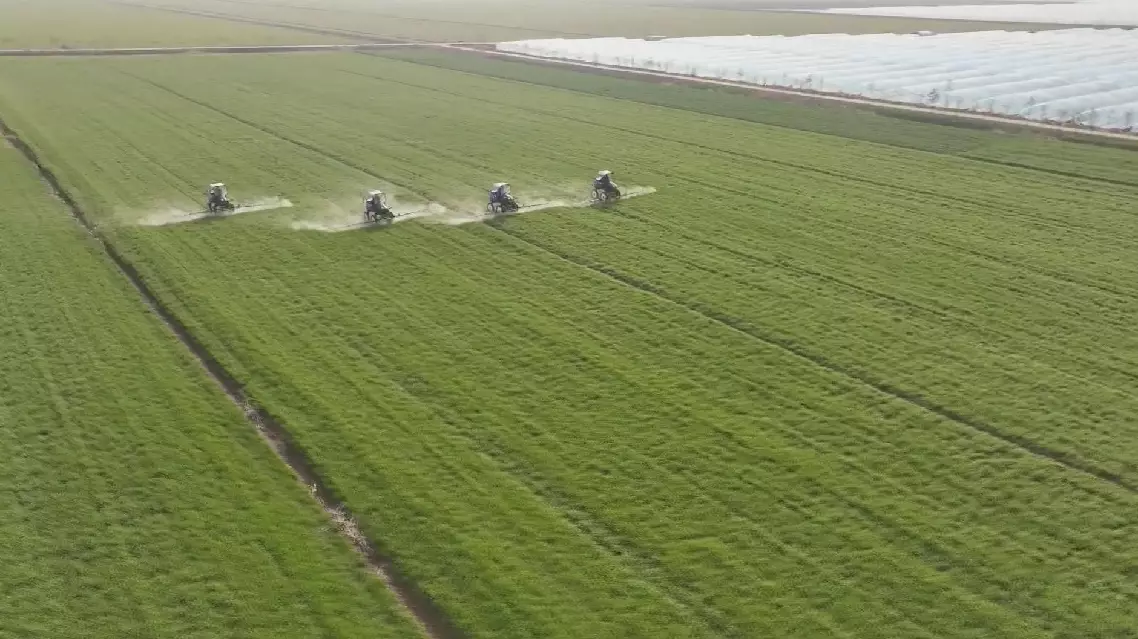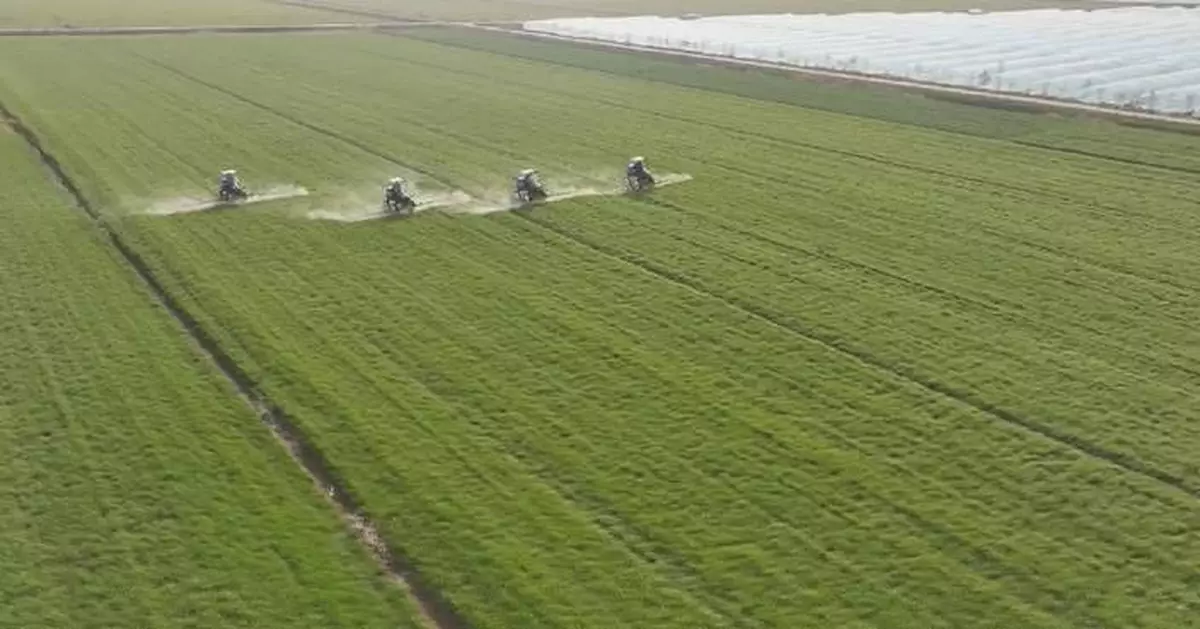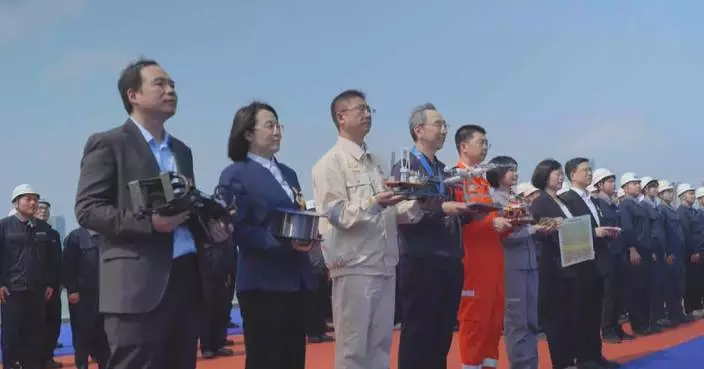China's capabilities to ensure supply and security of grain and other important agricultural products will be comprehensively improved in the next 10 years, as predicted in an outlook report released on Sunday by the Ministry of Agriculture and Rural Affairs.
According to the "China Agricultural Outlook Report (2025-2034)," the government continued to increase its support for grain production this year, raising the minimum purchase price of wheat and early indica rice, and stabilizing subsidies for corn and soybean producers and rice subsidies. It is estimated that the intended grain planting area this year will be 1.787 billion mu (about 119 million hectares), and the grain yield per unit area will continue to increase.
"We will carry out large-scale yield enhancement campaign for grain and oil crops, and promote the integration of good fields, good seeds, good machinery and good methods, to accelerate the construction of high-standard farmland. We will also focus on promoting varieties such as special wheat varieties with strong and weak gluten, and corn that is resistant to high planting density and suitable for machine harvesting. The grain yield per unit area will reach 397 kilograms, an increase of 2.3 kilograms over the previous year. The total grain output for the whole year is expected to be 709 million tons, higher than the previous year," said Xu Shiwei, a research fellow from the Institution of Agricultural Information under the Chinese Academy of Agricultural Sciences.
The report predicts that in the next 10 years, a systematic breakthrough will be made in the new quality productive forces in the agricultural field, and the supply and security of grain and important agricultural products will be improved in all aspects, both in quantity and quality.
"We will advance research in key areas of agricultural science and technology, push forward major projects in agricultural biobreeding, accelerate the cultivation of breakthrough varieties such as wheat varieties resistant to ergot, and high-oil, high-protein and high-yield soybeans. We will also vigorously develop smart agriculture, and expand the application scenarios of artificial intelligence in agriculture. In the next 10 years, grain production will grow steadily and is expected to reach 753 million tons by 2034," Xu said.

China's supply of important agricultural products to improve: report
U.S. tariffs on Cambodia, which were set at 49 percent, have sparked concerns among the Southeast Asian country's key export industries such as garment manufacturing amid the ensuing economic uncertainties.
On April 2, U.S. President Donald Trump announced the 49 percent "reciprocal tariff" on goods imported from Cambodia, the highest among all countries. Days later, the U.S. reduced the so-called "reciprocal tariff" to 10 percent for 90 days, offering a window period to Cambodia for negotiations with it.
Cambodian businesspeople say the tariffs have the potential to wreak havoc on the country's manufacturing sector, which, according to data from the World Bank, makes up around a fifth of the country's GDP.
"For U.S. manufacturers, definitely, there will be a big impact. If manufacturers are focusing on U.S. products, they are now in the middle. They don't know what they should do at the moment because the tariff now from Cambodia to the U.S. is actually quite high," said Dr. Ben Li, a Hong Kong investor in Cambodia and Chairman of the Cambodia Chinese Commerce Association.
Nevertheless, Li sees the tariff hike as an opportunity to export more Cambodian goods to the European Union, where a majority of Cambodian exports enjoy duty-free status.
"I always say there will be a light (at the end of the tunnel.) Even now, the U.S. tariff is so high, it's going to be so high after 90 days, we don't know. But, there's still a big market to Japan or to the European Union. There's still a big opportunity there," he said.
The Cambodian investor also believes the development of major infrastructure projects will help support Cambodia's economy.
"Especially the new canal and then the new airport, and the railways which connect to China. I believe once the logistics and infrastructure are built up, it can help the whole country's economy. By reducing the transportation costs, it can also mitigate the tariff costs," he said.
Cambodia and the U.S. held their first tariff negotiations on April 16, with more expected to follow. Local experts said the stakes are high for the country's workers.
"If this negotiation fails, there will be a significant impact. It will include the garment and travel goods sector. These sectors consist of about 1,068 factories and 930,000 workers. The income generated from these sectors is about 3 billion dollars per year. So it would significantly impact Cambodia's economy, jobs and incomes," said Chey Tech, a socio-economic research and development consultant from Dynamic Alliance Consulting.
Despite the potential risks, Tech expressed his optimism about a positive outcome, citing Cambodian Prime Minister Hun Manat's letter to Trump on April 4.
"The Prime Minister's letter confirmed that Cambodia would reduce the tariff rate for U.S. goods to 5 percent. Second, Cambodia is the least developed country. Third, Cambodia produces goods that the developed countries won't produce. We asked whether the U.S. would be able to produce these low-cost products. It cannot," said Tech.
In 2024, Cambodia exported goods of 9.9 billion dollars to the U.S., making it the country's largest market, accounting for 37 percent of Cambodia's total exports.

49-percent US tariffs sparks worry among Cambodia's key export industries





















































